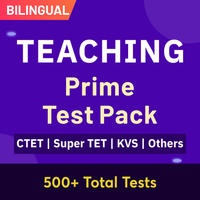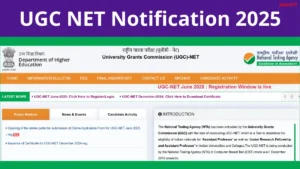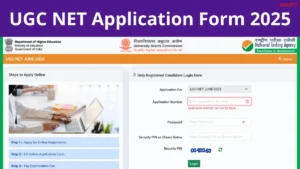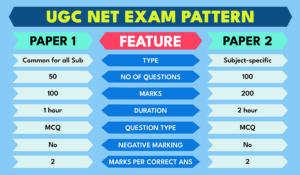Table of Contents
Curriculum contains collection of lessons and assessments which will taught in classroom by teacher. Curriculum defined to make child develop fundamental skills to achieve their goals, ideals and aspirations of life. Here we are going to learn Curriculum and its types which also explains difference between Curriculum Framework, Curriculum, Syllabus and Text Books.
Curriculum / पाठ्यचर्या
Meaning of Curriculum
According to Smith (1996, 2001) ‘the idea of curriculum is hardly new – but the way we understand and theorize it has altered over the years – and there remains a dispute as to meaning’.
The Latin meaning of the term ‘curriculum’ is a ‘racecourse’ used by chariots. Hence, it can be understood as any path or course of study which to be undertaken by an educational institution, to be covered in a specified timeframe. The course of events can take place both inside and outside the school. Hence, while defining curriculum as ‘course of events’, one need to elaborate, ‘which course of events’. It encompasses “the total experience provided to the learners in and out of school’.
पाठ्यचर्या का अर्थ
“पाठ्यचर्या” शब्द का लैटिन अर्थ एक “रेसकोर्स” है जिसका उपयोग रथ द्वारा किया जाता है। इसलिए, इसे अध्ययन के किसी भी मार्ग या पाठ्यचर्या के रूप में समझा जा सकता है, जिसे एक शैक्षिक संस्था द्वारा निर्धारित समय सीमा में कवर किया जाना है। घटनाओं का कोर्स स्कूल के अंदर और बाहर दोनों जगह हो सकता है। इसलिए, पाठ्यक्रम को “घटनाओं के पाठ्यक्रम” के रूप में परिभाषित करते हुए, एक को “घटनाओं के पाठ्यक्रम” को विस्तृत करने की आवश्यकता है। इसमें “स्कूल में और बाहर शिक्षार्थियों को प्रदान किया गया कुल अनुभव” शामिल है।
Differentiating Between Curriculum Framework, Curriculum, Syllabus and Text Books
Most often, there is confusion in the terms curriculum framework, syllabus and curriculum itself. Let us try to understand the difference among these terms.
पाठ्यचर्या की रूपरेखा, पाठ्यचर्या, पाठ्यक्रम और पाठ्य पुस्तकों के बीच अंतर करना
बहुधा, पाठ्यचर्या की रूपरेखा, पाठ्यचर्या और पाठ्यक्रम में ही भ्रम होता है। आइए हम इन शब्दों के बीच के अंतर को समझने की कोशिश करें।
Curriculum Framework:
It is a plan that interprets educational aims vis – a – vis both individual and society in order, to arrive at an understanding about the kinds of learning experiences to be given to the learner in the schools.
पाठ्यचर्या की रूपरेखा: यह एक योजना है जो स्कूलों में शिक्षार्थी को दिए जाने वाले सीखने के अनुभवों के बारे में एक समझ बनाने के लिए व्यक्ति और समाज दोनों के सामने शैक्षिक उद्देश्यों की व्याख्या करती है।
Curriculum:
You have already studied various definitions as curriculum. It must be clear to you know that of Curriculum is planned activities which are designed to implement a particular educational aim includes the content to be taught and the knowledge, skills and attitudes which are to be deliberately fostered, together with statements of criteria for selection of content, and choices in methods, materials and evaluation.
पाठ्यचर्या: आपने पाठ्यक्रम के रूप में विभिन्न परिभाषाओं का अध्ययन किया है। यह आपको स्पष्ट होना चाहिए कि पाठ्यचर्या नियोजित गतिविधियाँ हैं जिन्हें एक विशेष शैक्षिक उद्देश्य को लागू करने के लिए डिज़ाइन किया गया है, जिसमें सिखाई जाने वाली सामग्री और ज्ञान, कौशल और दृष्टिकोण शामिल हैं जिन्हें सामग्री के चयन के लिए मानदंडों के कथनों के साथ विधियों में विकल्प, सामग्री और मूल्यांकन में जानबूझकर बढ़ावा दिया जाना है।
Syllabus:
Refers to the content of what is to be taught and the knowledge, skills and attitudes which are to be deliberately fostered; together with stage specific objectives.
पाठ्यक्रम: जो पढ़ाया जाना है उसकी विषय वस्तु और ज्ञान, कौशल और दृष्टिकोण को संदर्भित करता है जिसे जानबूझकर बढ़ावा दिया जाना है; अवस्था विशिष्ट उद्देश्यों के साथ.
Textbook:
When as a teacher, you start working with children in classrooms; you have some ‘content’ that you have to teach, in other words, you have a syllabus. That syllabus is very often confined in the textbook. Thus, a textbook becomes an embodiment of syllabus – all that is in it has to be taught, and that is all that is to be taught. It becomes a methodological guide for all aspects of classroom practices – i.e. what has to be read, it also becomes the evaluation system – questions at the end of each chapter have to be answered orally and in writing, reproducing the text from the book itself. The possibility of providing enriched experiences to the children gets a little boost when teacher starts using textbooks as reflective guides.
पाठ्य पुस्तक: जब एक शिक्षक के रूप में, आप कक्षाओं में बच्चों के साथ काम करना शुरू करते हैं; आपके पास कुछ “सामग्री” है जिसे आपको सिखाना है, दूसरे शब्दों में, आपके पास एक पाठ्यक्रम है। वह पाठ्यक्रम पाठ्यपुस्तक में बहुत ही सीमित है। इस प्रकार, एक पाठ्यपुस्तक पाठ्यक्रम का एक अवतार बन जाती है, इसमें जो कुछ भी है उसे सिखाया जाना है, और वह सब है जिसे पढ़ाया जाना है। यह कक्षा प्रथाओं के सभी पहलुओं के लिए एक पद्धतिगत मार्गदर्शिका बन जाता है यानी जो पढ़ना होता है, वह मूल्यांकन प्रणाली के प्रश्न भी बन जाते हैं, प्रत्येक अध्याय के अंत में मौखिक रूप से और लिखित रूप से उत्तर देना होता है, पुस्तक से ही पाठ को पुन: प्रस्तुत करना होता है। जब शिक्षक पाठ्यपुस्तकों का उपयोग चिंतनशील मार्गदर्शक के रूप में करना शुरू करते हैं, तो बच्चों को समृद्ध अनुभव प्रदान करने की संभावना थोड़ी बढ़ जाती है।
TYPES OF CURRICULUM
The curriculum can broadly be classified into three main categories. These are:
- Overt or Explicit Curriculum
- Hidden or Implicit Curriculum
- Null Curriculum
Let us understand each of these categories.
पाठ्यचर्या के प्रकार
पाठ्यचर्या को मोटे तौर पर तीन मुख्य श्रेणियों में वर्गीकृत किया जा सकता है। य़े हैं:
- प्रकट या स्पष्ट पाठ्यचर्या
- छिपे हुए या अंतर्निहित पाठ्यचर्या
- अशक्त पाठ्यचर्या
आइए हम इनमें से प्रत्येक श्रेणी को समझते हैं.
Overt Curriculum
Overt curriculum is also known as explicit curriculum and intended curriculum. This includes all those curricular and co – curricular, experiences, which are intentionally planned by the school, college or university organization to be provided to the learners. It consists of knowledge, skills, attitudes and values, which are overtly to be provided to the learners. Overt curriculum is designed keeping in mind the goals and objectives of the educational system. Thus, it is confined to those written understandings formally designed by curriculum designers and administrators.
प्रकट पाठ्यचर्या:
प्रकट पाठ्यचर्या को स्पष्ट पाठ्यचर्या और इच्छित पाठ्यचर्या के रूप में भी जाना जाता है। इसमें उन सभी पाठ्यचर्या और सह- पाठ्यचर्या, अनुभव शामिल हैं, जो जानबूझकर स्कूल, कॉलेज या विश्वविद्यालय संगठन द्वारा शिक्षार्थियों को प्रदान किए जाने की योजना है। इसमें ज्ञान, कौशल, दृष्टिकोण और मूल्य शामिल हैं, जो शिक्षार्थियों को प्रदान किए जाने के लिए अति विशिष्ट हैं। ओवरचर पाठ्यक्रम को शैक्षिक प्रणाली के लक्ष्यों और उद्देश्यों को ध्यान में रखते हुए बनाया गया है। इस प्रकार, यह पाठ्यचर्या डिजाइनरों और प्रशासकों द्वारा औपचारिक रूप से तैयार की गई उन लिखित समझों तक ही सीमित है
Hidden Curriculum
Hidden Curriculum is unintended or unnoticed curriculum which is often unwritten. You know that curricular inputs are implicitly provided to the learner by the organization through various means. Learners learn a lot from the social environment of the classroom and the school. A teacher during her course of interaction with learners provide instructional inputs, which might not be planned and designed by her earlier. Through various non – verbal behaviour like gestures and postures, eye contact, appreciation of learner behaviour by nodding, the teacher conveys many things. A hidden curriculum also includes the value system of the school and its teachers. Hence, a hidden curriculum is as important as the overt curriculum. Learners learn ‘appropriate’ ways to act at school is the part of hidden curriculum.
छिपे हुए या अंतर्निहित पाठ्यचर्या:
अंतर्निहित पाठ्यचर्या अनजाने में या बिना पढ़े पाठ्यचर्या है जो अक्सर अलिखित होता है। आप जानते हैं कि पाठ्यचर्या विशेष रूप से विभिन्न तरीकों से संगठन द्वारा शिक्षार्थी को प्रदान किए जाते हैं। शिक्षार्थी कक्षा और विद्यालय के सामाजिक परिवेश से बहुत कुछ सीखते हैं। शिक्षार्थियों के साथ बातचीत के दौरान एक शिक्षक शिक्षाप्रद इनपुट प्रदान करता है, जिसे शायद पहले उसके द्वारा नियोजित और डिज़ाइन नहीं किया जा सकता है। विभिन्न गैर-मौखिक व्यवहार जैसे इशारों और मुद्राओं, आंखों से संपर्क, चकमा देकर शिक्षार्थी के व्यवहार की सराहना के माध्यम से, शिक्षक कई चीजों का खुलासा करता है। एक छिपे हुए पाठ्यचर्या में स्कूल और उसके शिक्षकों की मूल्य प्रणाली भी शामिल है। इसलिए, एक छिपा हुआ पाठ्यचर्या उतना ही महत्वपूर्ण है जितना कि प्रकट पाठ्यचर्या. शिक्षार्थी स्कूल में कार्य करने के “उचित” तरीके सीखते हैं जो छिपे हुए पाठ्यचर्या का हिस्सा है
Null Curriculum
It is physically not possible to teach everything in the schools, therefore many topics and subject areas are excluded intentionally. Eisner called them as ‘Null Curriculum’; For example, life education, career planning, etc. are not fine part of overt curriculum but are important areas.
अशक्त पाठ्यचर्या:
स्कूलों में सब कुछ सिखाना शारीरिक रूप से संभव नहीं है, इसलिए कई विषयों और विषय क्षेत्रों को जानबूझकर बाहर रखा गया है। ईस्नर ने उन्हें “अशक्त पाठ्यचर्या” के रूप में बुलाया, उदाहरण के लिए, जीवन शिक्षा, करियर नियोजन, आदि ओवरट पाठ्यक्रम का ठीक हिस्सा नहीं हैं, लेकिन महत्वपूर्ण क्षेत्र हैं.




 UGC NET Notification 2025 Out, Exam Date...
UGC NET Notification 2025 Out, Exam Date...
 UGC NET Application Form 2025 Starts for...
UGC NET Application Form 2025 Starts for...
 UGC NET Exam Pattern 2025 for Paper 1 an...
UGC NET Exam Pattern 2025 for Paper 1 an...














